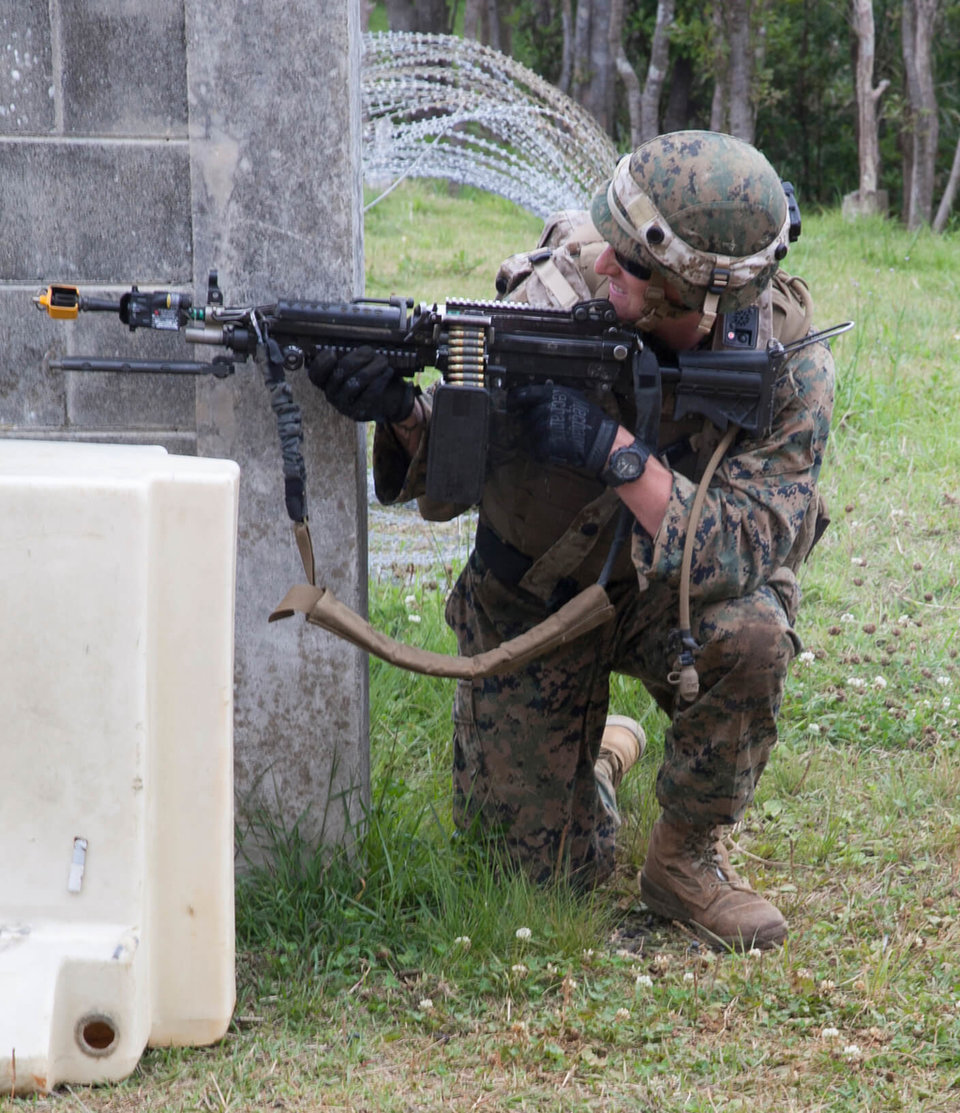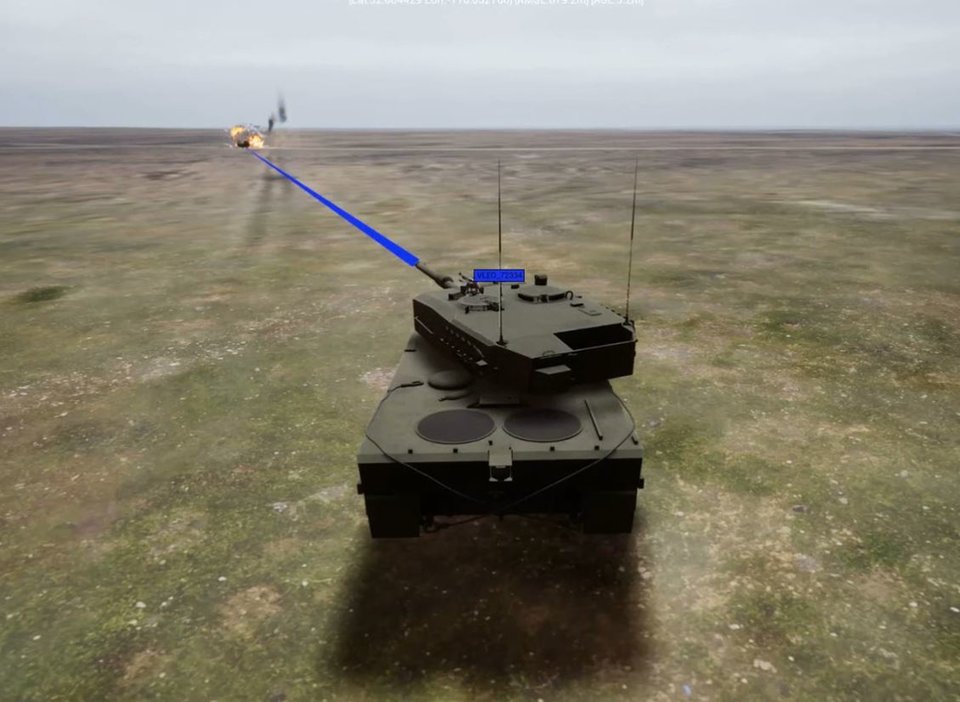Training
Cubic helps simulation meet reality for British Army training
Cubic Defence UK recently showcased a selection of the live, virtual and constructive training solutions it provides for the UK Ministry of Defence, including in use during a British Army training exercise on Salisbury Plain. Berenice Baker went along to find out how they work.
/ Image: Cubic
Cubic Defence supports the exercises the MOD regularly holds on Salisbury Plain so frequently its Amesbury office practically overlooks Stonehenge, and many of its team of subject matter experts and engineers are former armed services members. The company recently held a day dedicated to demonstrating its training products and how they can be integrated, ending, appropriately enough, with an insight into how they are used in a genuine military training exercise.
Cubic senior programme manager Martyn Armstrong says: “For the next training strategy, we’re looking to identify what the future of defence training will look like on the global scale. What we’re trying to do is link products that will sit together in a broadband future training ecosystem. It’s trying to get to the point where we’ve got next-generation immersive cross-domain capability that will allow us to integrate our live-virtual-constructive (LVC) air environment and our LVC ground environment into a single immersive environment.”
Armstrong said Cubic aims to take historic capability and bring it the 21st century by providing a balance between air combat, immersive virtual and ground training.
“Not surprisingly, ground fills a lot of that,” says Armstrong, “but we’re trying to draw those three environments together. We will then link our F-35 capability with our deployed LVC capability, which we’ve been delivering to the UK for three years.”
The Light Gun artillery mission training system
Historically it has been near impossible to integrate artillery into live-fire blue-on-blue exercises as indirect fire weapons tend not to be instrumented; instead, simulated artillery is operated from the exercise control (EXCON) training room. Crews carry out separate training and do not get the experience of moving equipment around the battlefield while under fire or and carrying out rapid and accurate loading and firing routines.
Cubic’s solution is its Light Gun, which it claims is the world’s first full-task on-platform artillery training system that enables a singular modular training system to be used not just in individual crew training exercises but also as part of collective training. It is currently in use at the Royal School of Artillery.
Operations manager Neale Smiles says: “A box on the barrel gives the bearing and elevation and takes into account the charging used. This information now comes from the gun on the ground, not a keyboard. It’s a wireless applique system that can be attached to any in-service equipment.”
“We need the ‘Pukka factor’, where the adrenaline rises during training like it does in combat, removing friction when on the battlefield.”
Light Gun gathers data to generate direct and indirect firing solutions from an on-platform sensor, calculating where the projectile would hit, the area of effect and how much damage it would cause. This enables artillery to realistically participate in instrumented live training environments, simulating the full range of weapons effects.
It’s not all fancy electronics, though. Cubic’s experts have developed simulated artillery ammunition to enable enhanced individual training. Currently, dummy rounds have to be extracted using the misfire procedure after each firing sequence before another round can be loaded, which is time-consuming, cumbersome and unrealistic. Cubic has developed drill rounds that are identical to regular artillery rounds but one-tenth the weight of and hollow, so as many as 10 rounds can be loaded up the barrel during an exercise.
Cubic’s Alastair Parkinson says: “We don’t want to introduce false drill in training which could result in unintended casualties on the battlefield. We need the ‘Pukka factor’, where the adrenaline rises during training like it does in combat, removing friction when on the battlefield. If a round ends up going to the wrong place, the commander needs to understand the consequences.”

Warfighter training. Image: Cubic
Virtual training in the Synthetic Wrap dome
Cubic’s Synthetic Wrap is a portable virtual training dome that simulates different training environments to prepare combatants for the field, literally allowing them to get down in the dirt even though the surrounding scenery may be virtual. Users interact with a wrap-around projected image of the scenario using genuine equipment like ruggedised laptops or emulated weapons.
Data from exercises currently underway can be transmitted into the 360° projection in real time so each real soldier or vehicle appears in the game. Cubic doesn’t use the word game frivolously - it uses technology from VBS3, the latest in the Virtual Battlespace game-style software series used by the UK MOD, among others. It uses a high-bandwidth platform connected via Cubic’s LTE networking technology.
Synthetic Wrap enables soldiers to carry out real training in even the most niche capabilities that might otherwise be too expensive or dangerous to learn in the field, or that would take place in a hard-to-access environment. It came into service in spring 2016 and has been through site acceptance in the UK, Canada and Kenya.

Virtual training inside the Synthetic Wrap dome
Area Weapons Effect Simulator
The Area Weapons Effect Simulator (AWES) and its integrated Tactical Engagement Simulation system simulates large-scale force-on-force combat exercises, including the effects of direct fire, artillery mortar fire, mines and air-delivered munitions as well as nuclear, biological and chemical weapons.
Cubic has been delivering AWES in support of exercises on Salisbury plain since 2001. AWES tracks and monitors the actions and positions of more than 1,400 individual soldiers and 250 vehicles using GPS technology. It records the hits and misses of small-arms fire with Cubic’s Multiple Integrated Laser Engagement System (MILES) technology, which Armstrong describes as “Laserquest on steroids”, and recreates combat exercises for post-mission analysis.
From the soldiers’ point of view, anyone directly or indirectly affected by weapons fire will hear the results of the virtual impact in their headsets, which could be anything from loss of consciousness through losing a limb to death, and its impact on their subsequent participation – or not – in the exercise. All virtual, of course, but medical teams participating will be on call for their part of the exercise.

Weapons simulation exercise. Image: Cubic
CATS Metrix exercise control and after action review
Exercise control (EXCON) - training software enabling the collection of training data during a military exercise - powers the operations room behind training exercises on Salisbury Plain. Data can be viewed live and is also recorded for analysis after the event in an after action review so trainees can better understand what they did right and wrong and ensure training objectives and performance standards are met. This increases participants’ readiness so they can best perform in a real-world setting.
EXCON can be used by operators and instructors to plan, conduct, control, monitor, record, debrief and evaluate live force-on-force training up to Brigade level. They can review participants’ performance in a number of different ways to provide valuable feedback, whether that is exceptional contribution or deficiencies that need to be corrected.
Cubic’s latest EXCON capability, CATS Metrix, displays the location of participants, including instrumented individual soldiers and vehicles, on an electronic map, aerial photograph or in 3D in real time, showing what the players are doing in terms of moving and firing weapons, for example. Operators can simulate area weapons effects, engineer obstacles or simulate real obstacles to the instrumented players in the field. CATS Metrix is used by the British Army and the Italian and Swedish armies.

3D view of direct fire in CATS Metrix. Image: Cubic